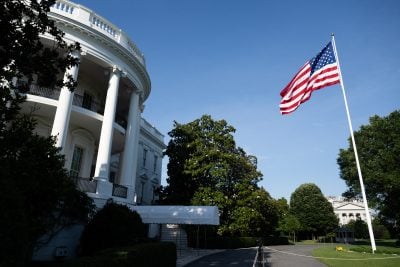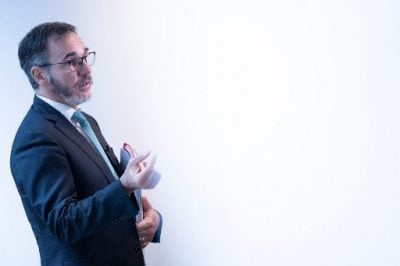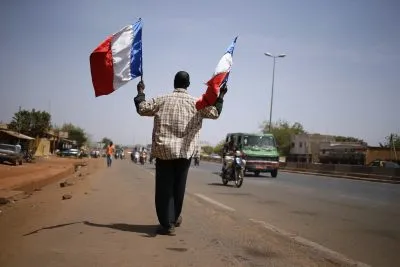This October, auction house Christie’s teamed up with the Museum of West African Art (MOWAA) to shine a light on African art and sell works by contemporary African artists. The collaboration, titled Know Who We Are, raised money for MOWAA and its forthcoming exhibitions, and was offered as part of Christie’s 20th and 21st Century Art auctions sale during the Frieze London arts week.
Know Who We Are showcased prized artworks from Africa and the diaspora, and saw renowned artists including Lakwena Mciver and Tunji Adeniyi-Jones donate their art to the auction. The exhibition was brought to life by MOWAA curator Aindrea Emelife, who also partnered with Christie’s in 2021 to curate Black, Bold, British, an exhibition showcasing the significance of black Britons in shaping the country’s creative landscape.
Contemporary African art is proving increasingly popular with buyers from Europe, America, and Asia, according to Isabel Bardawil, specialist in post-war and contemporary art at Christie’s, which the immense success of Know Who We Are (where Tunji Adeniyi-Jones’s masterpiece Reverse Dive Red sold for £75,600 ($92,000) only serves to affirm.
This recent exhibition is, however, only the latest chapter in the story of African art’s shift to front and centre of the global art scene. Once underappreciated and overlooked, African artwork has since grown to become a thriving and vibrant genre that captivates the imagination of art collectors and the general public alike.
London scene falls for African art
In London, the rise of African art and its influence is evident from galleries to exhibitions to museums. A short stroll from Christie’s flagship store, where the auction took place, is London’s exclusive Mayfair district, where the streets are peppered with galleries that proudly display contemporary African art in their windows alongside Dutch Masters and contemporary European art. Across the Thames on London’s South Bank is the Tate Modern gallery, where an exhibition of works by Ghanaian artist El Anatsui was recently unveiled in the famous Turbine Hall.
Hannah O’Leary, senior director, head of modern and contemporary African art at Sotheby’s, likens the city to an international crossroads popular with global buyers. An equally prominent auction house, Sotheby’s, holds regular African art auctions throughout the year, and has just set a new record for the sale of African artwork with the sale of a Julie Mehretu painting for $9.3m.
At a typical African auction, Hannah explains, Sotheby’s has registrations for bidders from over 50 countries on all six continents. Sotheby’s held its most recent Modern & Contemporary African Art auction in October, featuring “a diverse selection of coveted and culturally significant works spanning the breadth of African history”, which saw 81 pieces of artwork sold for a total £2.3m ($2.8m).
So, what are the causes of this resurgence, which has seen talented African artists finally receiving the recognition they deserve? “African art history is part of global art history”, O’Leary says. “The continent was overlooked for so long, but Africa has such a rich history of art – not just emerging artists working today, but the very long line of artists before them who had been left out of galleries, auction houses, and museums worldwide, whose stories we want to tell.”
Although white, male, Western artists still tend to dominate the global art market, as the increase in contemporary African art fairs and galleries show, seasoned and callow collectors alike are increasingly seeking out desirable and in-demand African art. ArtTactic’s Modern & Contemporary African Artist Market Report estimates that global auction sales of African art increased by 44% in 2021, amounting to $72m.
Joe Kennedy is director of contemporary art gallery Unit London, which donated works by South African artist Sthenjwa Luthuli and Zimbabwean artist Option Dzikamai Nyahunzvi to Know Who We Are. He believes that both individuals and institutions “are now looking beyond the European art historical canon when shaping their collections, as the art world becomes ever more global in its outlook”.
Benin Bronze return spurs activity
To fully understand the genesis behind this boom of contemporary African art on the global art scene, we must return to MOWAA, which is due to open in stages from next year.
Benin City, Edo State, which was infamously looted of its unique statues, will now receive a dedicated centre of creativity, innovation, and art.
Benin is where MOWAA is situated and gives its name to the famous Benin Bronzes, which have become a by-word for the looting of treasures by colonial powers. These intricate sculptures were skilfully created over hundreds of years by artists working for specialist guilds in the royal court of the Oba (king) in Benin City. Now they reside in the British Museum in a glass case almost 3,000 miles from their homeland, caught within an eddy of repatriation discussions.
It is somewhat poetic that calls to return the Benin Bronzes to their rightful home are growing in tandem with the long-overdue rise of the global popularity of African art, and the creation of a dedicated artistic hub in Benin City. MOWAA’s opening will follow hot on the heels of other African art hubs including the Museum of African Contemporary Art Al Maaden, which opened in 2016 in Marrakesh, and the Rwanda Art Museum in 2018.
MOWAA curator Aindrea Emelife asserts that the opening of the museum in Benin “is not just an opportunity for Africa, but for the world”. Proceeds from the Know Who We Are auction at Christie’s will fund MOWAA initiatives including the presentation of the Nigerian Pavilion at the 2024 Venice Biennale, and the museum’s 20-acre creative district, including the Rainforest Gallery which will showcase art spanning all times, which was designed by the Dakar-based architecture firm Worofila.
These initiatives, Aindrea says, “will directly benefit core parts of MOWAA’s mission and creative initiatives, from providing critical infrastructure and programming, to supporting contemporary creatives and cultural heritage specialists in West Africa”.
As African art continues to captivate global audiences and exert a growing influence over the global art market, it serves as a reminder of the extraordinary power of art to transcend borders, bridge cultures, and unite people.
As part of the recent 1-54 contemporary art fair, the Big Mama Thornton exhibition (named after a Black jazz singer who never received credit for her work) displayed works by artists from the diaspora that shed light on overlooked voices and the impact of historical injustices in today’s world. The renaissance of African art, which has been growing over the past 30 years and is now enriching the global art canon and asserting its place in hearts and galleries around the world, is no mere fad. It is a long-overdue, lasting transformation that will leave an indelible mark on the collective global imagination for many years to come.
Want to continue reading? Subscribe today.
You've read all your free articles for this month! Subscribe now to enjoy full access to our content.
Digital Monthly
£8.00 / month
Receive full unlimited access to our articles, opinions, podcasts and more.
Digital Yearly
£70.00 / year
Our best value offer - save £26 and gain access to all of our digital content for an entire year!

 Sign in with Google
Sign in with Google 



